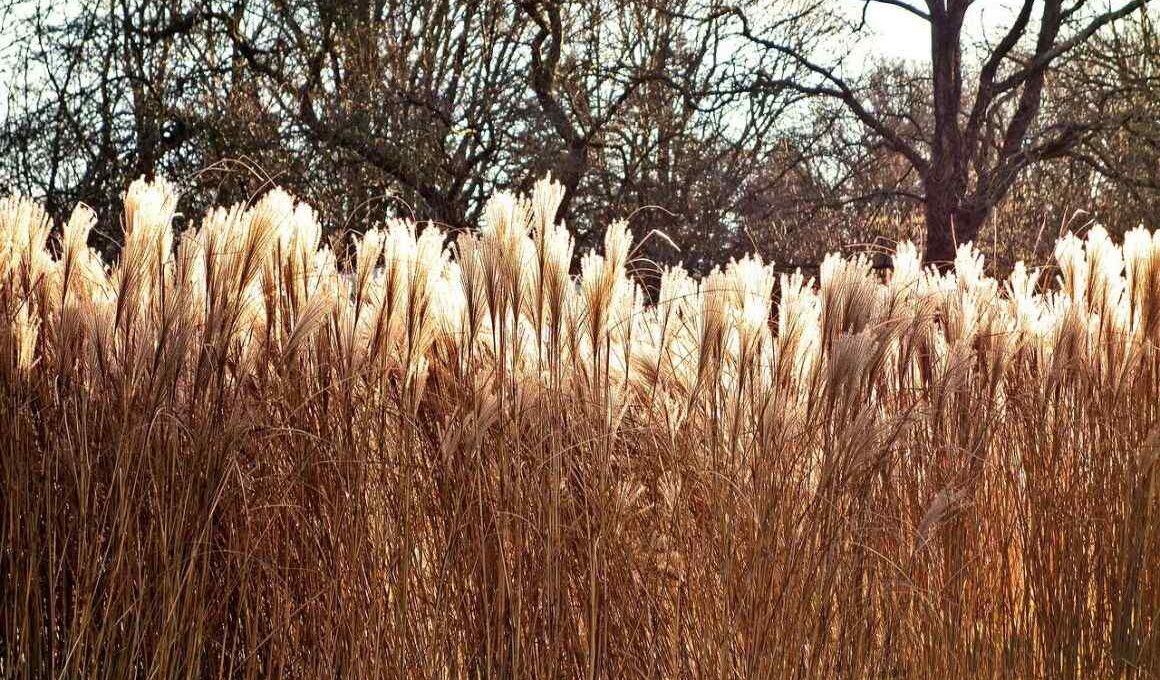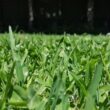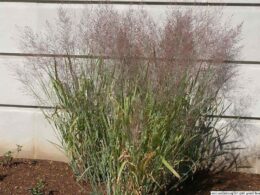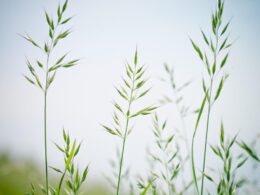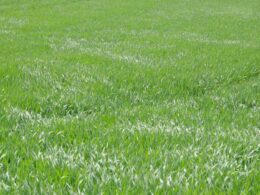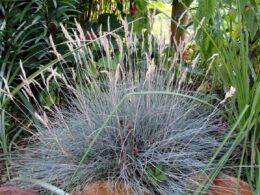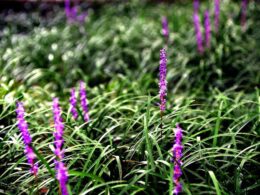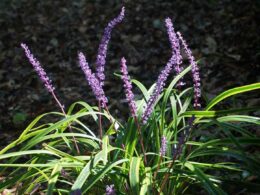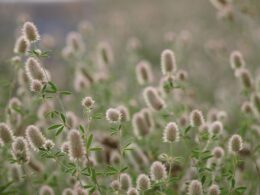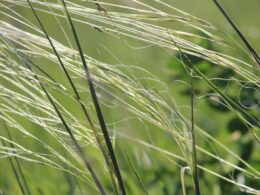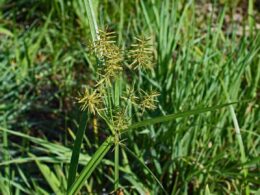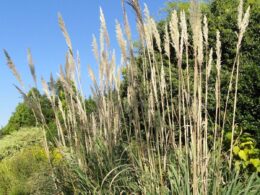Pampas Grass: Basic Information
Pampas grass is a tall, perennial grass that is native to South America. Its scientific name is Cortaderia selloana, and it is in the Poaceae family. The name “Pampas” refers to the Pampas Region in South America, where the grass can be found.
Pampas Grass Appearance
Pampas grass is a large, tufted grass that can grow up to 12 feet tall. It is characterized by its long, silvery-white leaves, which have a distinctive wavy margin. The flower heads of pampas grass are large and showy, ranging in color from white to pink to purple. Each flower head is surrounded by a ring of long, thin leaves, known as bracts.
Pampas Grass Habitat and Distribution
It is one of the most widely distributed grasses in the world, and can be found in temperate and subtropical regions on every continent except Antarctica. Pampas grass usually grows in open areas such as fields, prairies, and roadsides. It is tolerant of a wide range of conditions, and can even survive in poor, dry soils. In its native range, pampas grass is an important part of the ecosystem; providing food and shelter for a variety of animals. However, it has become an invasive species in many parts of the world, where it often competes with native plants and animals for resources.
Pampas Grass Negative Impact
Pampas grass is a beautiful, ornamental grass that can add visual interest to any landscape. However, pampas grass can also have a negative impact on the environment. The long, sharp blades of pampas grass can pose a danger to animals and humans alike. In addition, pampas grass is highly flammable, and wildfires have been known to spread quickly through areas where the grass is abundant. Pampas grass also competes with native plants for resources, and can easily take over an area, crowding out other vegetation. It is important to be aware of the potential dangers of pampas grass before planting it in your yard.
Types of Pampas Grass
Pampas grass is a tall, ornamental grass that is native to South America. There are three main types of pampas grass:
- Cortaderia selloana;
- Cortaderia jubata;
- Cortaderia rudiuscula.
C. selloana, or common pampas grass, is the most widely planted species and can reach heights of up to 12 feet. C. jubata, or purple pampas grass, has purple or pinkish panicles. Both C. rudiuscula and C. jubata produce seed asexually.
How to Care For Pampas Grass
Despite its dramatic appearance, pampas grass is relatively low-maintenance. It is drought-tolerant and can thrive in a variety of soil types. Pampas grass does require some pruning to control its growth, but it is otherwise easy to care for. Though it is often associated with humid climates, Pampas grass can actually tolerate a wide range of conditions. However, it does require some care and maintenance to keep it looking its best. Pampas grass should be trimmed back in early spring, before new growth begins.
Herbicide Treatment and Control Methods
Herbicide treatment is one of the most effective ways to control pampas grass, and there are a number of different products that can be used. Glyphosate is one of the most popular herbicides for pampas grass control, and it works by killing the plant’s foliage. However, glyphosate can also kill desirable plants, so it is important to be careful when using it. Also, non-invasive plants that are desired may compete with the seedlings to reduce germination and seedling occurrence. Make sure to follow the manufacturer’s instructions carefully to avoid damaging your lawn or harming yourself.
How to Grow Pampas Grass?
Pampas grass is relatively easy to grow, and it is tolerant of most soil types. However, it does require full sun and well-drained soil in order to thrive. To plant pampas grass, start by preparing the soil. Amend clay or sandy soils with compost or peat moss to improve drainage. Once the soil is prepared, dig a hole that is twice as wide as the root ball of the plant. Gently backfill the hole, being careful not to compact the soil. Water the plant deeply after planting, and continue to water once a week during dry periods. Pampas grass will require little to no fertilizer.
Should You Grow Pampas Grass?
Pampas grass is a beautiful and versatile plant that can add interest to any garden. However, it is also quite large and aggressive, so it is important to consider whether it is the right plant for your garden before you make the commitment to grow it. Pampas grass can grow up to six feet tall and spread just as wide, so it is best suited to large open spaces. Additionally, the plant produces a great deal of pollen, which can be a problem for people with allergies.





